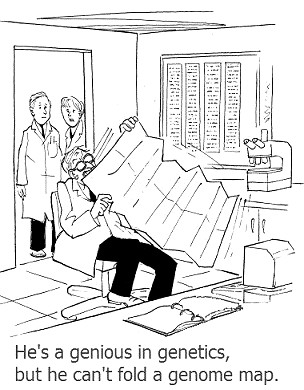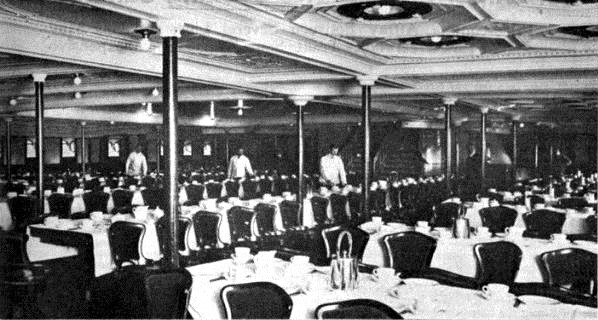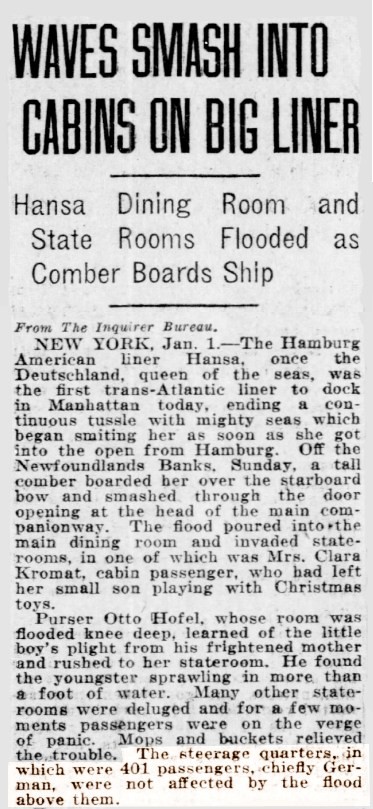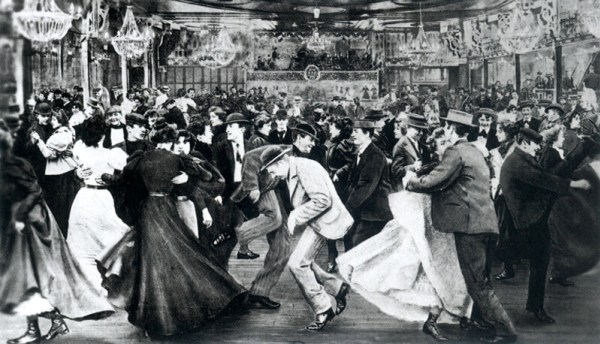|
The
|
||||||||||||||||||||||||||||||||||||||||||||||||||||||||||||||||||||||||
THE BURGENLAND BUNCH NEWS - No. 294 January 31, 2019, © 2019 by The Burgenland Bunch All rights reserved. Permission to copy excerpts granted if credit is provided. Editor: Thomas Steichen (email: tj.steichen@comcast.net) BB Home Page: the-burgenland-bunch.org BB Newsletter Archives: BB Newsletter BB Facebook Page: TheBurgenlandBunchOFFICIAL Our 23rd year. The Burgenland Bunch Newsletter is issued monthly online. The BB was founded in 1997 by Gerald Berghold, who died in August 2008. |
||||||||||||||||||||||||||||||||||||||||||||||||||||||||||||||||||||||||
| Current Status Of The BB: * Members: 2689 * Surname Entries: 8539 * Query Board Entries: 5741 * Staff Members: 14 |
||||||||||||||||||||||||||||||||||||||||||||||||||||||||||||||||||||||||
|
||||||||||||||||||||||||||||||||||||||||||||||||||||||||||||||||||||||||
1) THE PRESIDENT'S CORNER (by Tom Steichen)  In
this month's collection of bits and pieces in Article 1, starts off with a Hungarian gravestone
acronym that had me baffled: do you know what A.B.F.R.A. means? After that discussion, I tell you about a new source
for Kürbiskernöl (Pumpkin Seed Oil) and then we have another edition of our BB Facebook round-up, plus a few
more words about book, Distant Sons. Then there is change pending in Burgenland's government; I'll tell you a bit
about that before giving you a short take on FamilySearch.org's 2018 record additions and 2019 plans. We end,
of course, with our usual bits: the Dujmovits' book, a Burgenland recipe, and a humor item. In
this month's collection of bits and pieces in Article 1, starts off with a Hungarian gravestone
acronym that had me baffled: do you know what A.B.F.R.A. means? After that discussion, I tell you about a new source
for Kürbiskernöl (Pumpkin Seed Oil) and then we have another edition of our BB Facebook round-up, plus a few
more words about book, Distant Sons. Then there is change pending in Burgenland's government; I'll tell you a bit
about that before giving you a short take on FamilySearch.org's 2018 record additions and 2019 plans. We end,
of course, with our usual bits: the Dujmovits' book, a Burgenland recipe, and a humor item.Article 2, The Hianzisch Dialect, by Wilhelm Schmidt, is one of a pair of related articles (the second, titled "The Hianzn", will be published next month). In this first article, Wilhelm explores the origins of Hianzisch, a German dialect found mostly only in Burgenland. In Article 3, Jane Horvath shares a story about The Happy Burgenländers from the SS Hansa, a ship that arrived in prohibition-era New York. The odd thing was that the passengers were not quick to disembark. Read her story to find out why. I've written before about the record-setting oldest of the old. Article 4 speaks to potential Old Age Fraud, as it seems likely that the current record holder wasn't really who she claimed to be. If so, predicted maximum human life span may be about three years less than currently proposed. The remaining articles are our standard sections: Historical Newsletter Articles, and the Ethnic Events and Emigrant Obituaries sections. 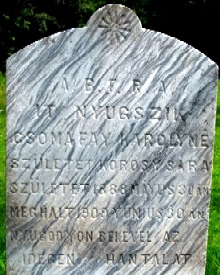 A.B.F.R.A., a Hungarian
Gravestone Acronym: While preparing information for a correspondent, I looked at a mostly-unrelated Find-A-Grave
entry that was for a Hungarian burial in the Mineville, NY, cemetery. What drew my attention was the acronym, A.B.F.R.A.,
engraved across the top of the tombstone (see image to the right). A.B.F.R.A., a Hungarian
Gravestone Acronym: While preparing information for a correspondent, I looked at a mostly-unrelated Find-A-Grave
entry that was for a Hungarian burial in the Mineville, NY, cemetery. What drew my attention was the acronym, A.B.F.R.A.,
engraved across the top of the tombstone (see image to the right).Looking further in the cemetery, I found the same acronym on a number of other obviously-Hungarian stones... so what did this unexpected acronym stand for? In fact, it turned out to be easy to find out, as it is explained on a number of sites on the web, but it makes slightly more sense if the next line on the stone is included too, so here is the first line (expanded to the Hungarian words) along with the second line (with a minor spelling correction): A boldog feltámadás reménye alatt / itt nyugszik = Under the hope of a happy resurrection / here rests Which is a very nice and fitting sentiment for a gravestone. There are also two lines at the bottom of the stone that present another fitting sentiment for a gravestone, though with a slight twist that I'm sure you'll understand (after I explain a bit more): nyugodjon békével az / idegen hant alatt = may she rest in peace / under the foreign mound The "twist," of course, is the reference to "the foreign mound" (rather than "her grave" or, even more so, just "may she rest in peace," with no second line). But, before I explain further, I must give credit where credit is due and I need to provide you with a better image of the gravestone so you can follow along. First, credit: Julia Szent-Gyorgyi is responsible for the fine detail of the translations... I had translated these last lines as "Rest in peace under her grave" but, as Julia does so often for me, she pulled out the subtleties of the text; something I simply cannot do with my limited understanding of the language! Thank you, Julia! Second, here is a link to an original-sized version of the tombstone image. If you take a quick look at the full-sized image, you should be able to see why this was indexed in Find-A-Grave as the record for Fay Karoline Csoma... but, if you take a careful look, you will see how wrong that is! This is, in fact, the grave of Mrs. Károly Csomafáy, neé Sára Körösy. The middle lines on the stone (with spacing, spelling and accents corrected) read: Csomafáy Károlyné született Körösy Sára született 1888 május 30-án meghalt 1909 június 30-án = Mrs. Károly Csomafáy born Sára Körösy born 30th May 1888 died 30th June 1909 I'll note that the creator of the original Find-A-Grave entry misread the
death year as 1905, making "Fay" just 17 years old at death and thus far less likely to be married than if at the correct
year (1909) and age (21). He also noted that the stone text was in a foreign language (implying that he was unable to
understand what he was seeing). It also did not help that the inscription had spelling errors, ran words together, used Y
for both Y and J, and inconsistently used accent marks.
Of particular note is that the added nearly 9 million more New York passenger records and over 11 million new US census
records. |
||||||||||||||||||||||||||||||||||||||||||||||||||||||||||||||||||||||||
2) THE HIANZISCH DIALECT (by Wilhelm Schmidt) Hianzisch is the German dialect used nearly exclusively in Burgenland. Unfortunately, it is almost entirely a spoken dialect. No writing in it occurred until the late 1800s. Without earlier writing, its origin and development are difficult to trace. To my knowledge, no attempt has even been made... the ensuing explanation is my effort to fill the gap. Linguists classify dialects by comparison with other dialects. Since Hianzisch is, for the most part, identical with Bavarian, it is usually considered to be a form of Bavarian. Its principal difference from Bavarian is the ui diphthong, for which reason it is often referred to as the ui-dialect. The questions are: when, where and how did this dialect come to be spoken? As to when, a rough estimate is 900 AD to 1300 AD. When the Hungarians occupied the area around 900, its inhabitants were Bavarians. The dialect they spoke lacked the ui diphthong. It is first referred to in print in 1314. Most likely, the dialect developed in a relatively short time sometime during these centuries, but an exact time has yet to be determined. The identification of the place where the dialect developed requires a brief, general description of the genesis of a new dialect. It forms when speakers of one dialect learn to speak another and retain a speech pattern of their own dialect, which is then adopted by the speakers of the other dialect. The pattern cannot simply be an accent. A mutual alteration in speech has to occur. On this basis, the area of the Burgenland can be eliminated as the place where the ui-dialect developed. The reverse of a mutual adaptation occurred. Two radically different languages—German and Hungarian—came to be spoken side by side. Over time, loan words were taken by each language from the other. The words were pronounced slightly differently in the language by which they were adopted, but not in the language of their origin. Curiously, Hungarian does have a word similar to the ui diphthong, namely új, meaning new [as in Újvár (New Castle), the name of the castle in Güssing]. Quite certainly, however, this word is not the source of the ui diphthong. It is pronounced as two syllables with equal stress (oo-ee), the diphthong as one with the emphasis on the u (ooey). If not in the area of Burgenland, where did the new dialect arise? A case can be made that it originated in the province of Lower Austria, the remnant of the Ostmark ceded by the Hungarians after their defeat at Lechfeld in 955. In 976, Leopold I was appointed to rule it. He hailed from Babenberg, now located in the Bavarian state of Oberfranken, and spoke a form of Frankish. His subjects in the Ostmark still spoke Bavarian. A blending of the two dialects is suggested by the formation of the word Muida. In Frankish, mother is Meuder, pronounced Moider, in Bavarian, it is Muada. The Babenberger apparently began to say the Bavarian word with a Frankish twist. The formation of the new dialect is certainly more complicated than the change in the pronunciation of one word. But its formation was recognized even at the time by being called Ostdonaubairisch. (If the coinage of this name were known, the time at which the dialect was formed could be pinpointed more precisely.) If indeed this dialect developed in Lower Austria, its dissemination into Western Hungary requires explanation. Assuming that its Bavarian inhabitants still spoke Bavarian, they must have learned the new dialect from the residents of cities with whom they had commercial contact. These included the cities of Western Hungary, largely populated by hospites (guests), the tradesmen and merchants that came to Hungary, via Vienna, at the invitation of King Stephen I. The peasants who sold their produce to the hospites necessarily had to learn the dialect to communicate with them, and brought it back to their villages. 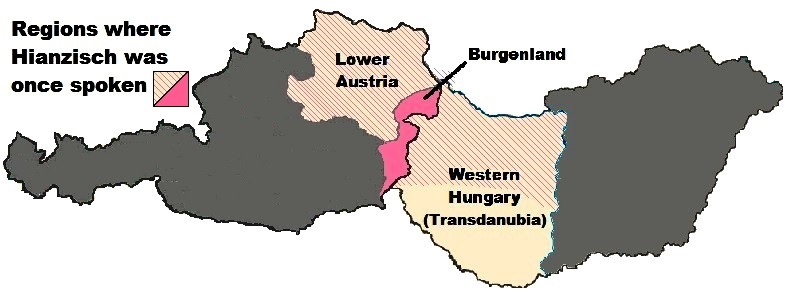 Toward the end of the 13th century, the dialect ceased to be spoken in Vienna. The Babenberger died out in 1246. Three decades later, the Habsburgs acquired rule of the duchy. They originated in northern Switzerland and spoke Swabish. When they assumed rule, their native speech was modified to form Viennese. This dialect completely replaced Ostdonaubairisch in Vienna and its surroundings, but not in Western Hungary. The ultimate restriction of the ui-dialect to western Hungary can be attributed to invasions of the country, first by the Mongols in 1241 and then by the Turks in 1526. Both advanced as far west as the Raab River. The hospites fled the advancing Mongol hordes. Hospites were invited again after the retreat of the Mongols, but only as border guards in Transylvania. After the Turks occupied central Hungary, Western Hungary became part of the so-called Royal Hungary. It was not annexed to Austria. As a result, the economic and cultural conditions of the area prevailed. The inhabitants of the area continued to speak the dialect they had become accustomed to speaking. |
||||||||||||||||||||||||||||||||||||||||||||||||||||||||||||||||||||||||
3) MEET THE HAPPY BURGENLÄNDERS FROM THE SS HANSA by Jane Horvath (original published at janesgenes.com; used by permission) 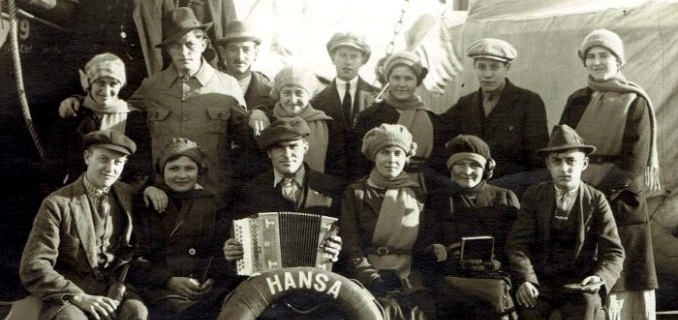 On January 1, 1923, The SS Hansa became the first trans-Atlantic liner of the year to dock in Manhattan. The ship carried about 1,500 passengers, including 400 immigrants. Most of the immigrants were from Burgenland, Austria. Not listed on the ship manifest were the 1,800 bottles of alcoholic beverages hidden within the hold of the ship. 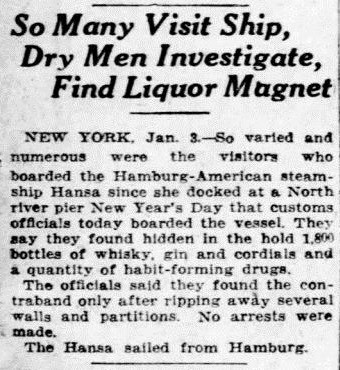 Pittsburgh Daily Post, 4 Jan 1923, p5 Researching European ancestors usually starts with a search of old passenger lists. Often, you’ll a find a ship manifest with some useful bits of information such as the name of a traveler’s closest relative or their village of origin. Sometimes, the vessel named on the manifest will connect to an event of historical significance, or possibly the voyage may have been part of some newsworthy happening. Occasionally, you may obtain a trifecta of genealogical artifacts—a ship manifest, newspaper articles about the voyage, and a photograph of passengers on the boat. By sheer luck, I’ve stumbled across all three of these items pertaining to the voyage of the SS Hansa. 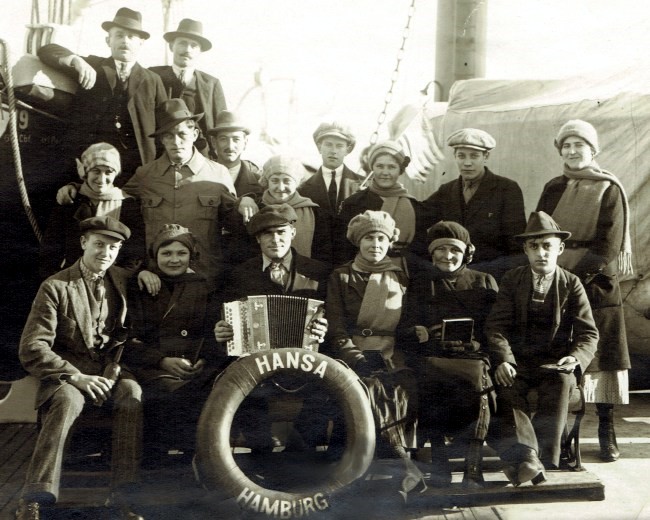 Though I wish I could say the happy people from this photo are relatives of mine, they are not. I discovered a page from the passenger manifest while researching for a friend. I later obtained the ship photo from Burgenland Bunch member and best-selling author, Michele Wucker, who we later learned is my friend’s 3rd cousin. Note: If your family was from a village in Burgenland and you meet someone else whose family was from that same village, there’s a pretty good chance you’re related. 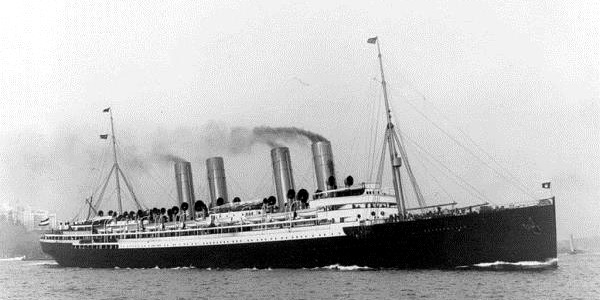 The SS Hansa, previously the SS Deutschland. Image source: Wikimedia Commons After a tumultuous eleven-day journey through ocean storms, the liquor-laden Hansa docked in prohibition-era New York City. Instead of rushing off to their final destinations, many passengers lingered on the boat. As was common practice, friends and family members arrived to greet the passengers and escort them to their new homes. However, many visitors to the SS Hansa chose to board the boat and stay a while. It initially struck me as odd that these passengers would choose to remain on the ship after docking. Though 3rd-class accommodations were vastly better than they had been decades prior, surely living on the ship wasn’t a luxurious or joyful experience. 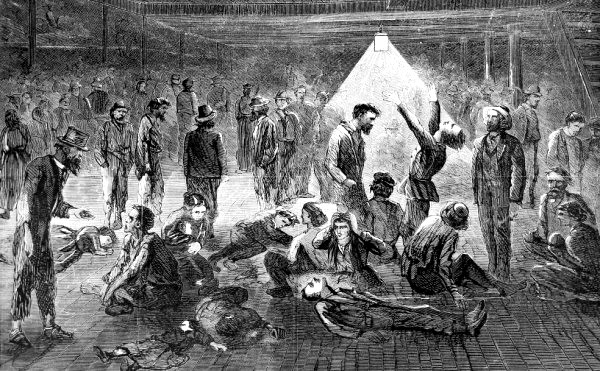 Depiction of steerage passengers in the 1860s, Harper’s Weekly, 27 Mar 1869. Or was it? According to the The Marine Journal,
It seems the “Ship of Democracy” was a pretty nice way to travel. Below is a photo of the 3rd-class dining hall on
the Hansa, taken in 1921. |
||||||||||||||||||||||||||||||||||||||||||||||||||||||||||||||||||||||||
4) OLD AGE FRAUD? A couple of times over the past years I've written about the world's oldest living persons, asking in 2015: "Do you have living relatives born in the 1800s?" My subsequent text said, "I doubt it! But if so, those relatives would be over 115 years old and would be well on their way toward setting a new maximum human lifespan record. The documented maximum human lifespan has risen from 103 in 1798 to 122.45 in 1997 (the current record) but scientific researchers say 'no fixed theoretical limit to human longevity is apparent today.' Statistical modeling and analysis of recent human survival curves predicts a maximum human lifespan of about 125 years, but someone that age will truly be the one-in-a-billion!" That 1997 record of 122.45 years belonged to a French woman named Jeanne Calment. However, a 2018 study strongly suggests that Calment's daughter, Yvonne, took on Jeanne's identity in 1934 to avoid paying inheritance taxes (of up to 35% at that time). Yvonne was born in 1898, which would have made her 99 years old when she died in 1997. Not surprisingly, Calment would not be the first record holder whose true age has been called into question due to falsified identity. Quebec’s Pierre Joubert was thought to have been history’s oldest man at 113 years old when he died in 1814. However, a later investigation annulled the claim when it found that Joubert had simply been mistaken for his same-named father. The current questioning of Calment's age arose publicly at a 2018 gerontology meeting when Nikolay Zak, who holds a PhD in physico-mathematical sciences, presented a new assessment of Calment's claim relative to the available statistical models of old-age survival. The initiator of this investigation was Valery Novoselov, an assistant professor of gerontology and geriatrics, who had explored the various scientific articles on the survival curve of centenarians (age 100+) and supercentenarians (age 110+) and observed that, despite their differing views, the case of Jeanne Calment didn’t fit into any of the refined math models behind their studies. He noted that, if one imagined the curves of survival in these studies, Jeanne was "a dot away from the main trend that they describe." However, even as the (retired) statistician I am, I had a hard time picturing what "a dot away" meant... so I created my own graphs. Wikipedia provides lists of the verified oldest 100 men and 100 women... I captured their data and present it graphically below. These graphs show the relationship between year born and age at death. You may note some reddish symbols among the blue data points; these are top-100 oldest people who were still alive on 13 Jan 2019 when I captured this data (as you might expect, their "age at death" is really their age on Jan 13): 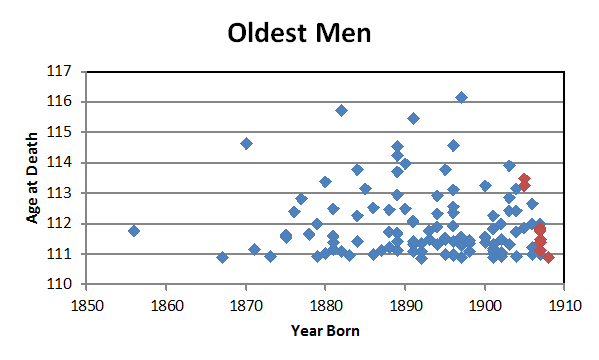 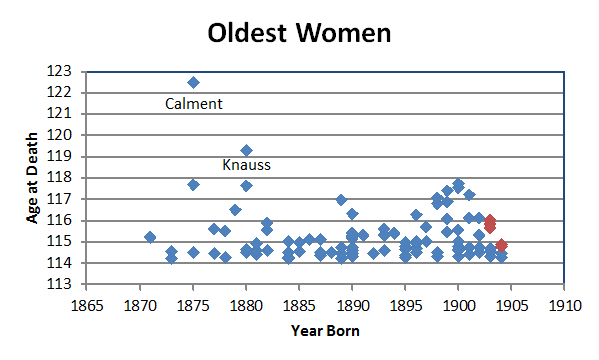 If you look first at the graph for the oldest men at death (left graph), you should see that a lot of these old men made it to age 111 but then the crowd thins out quickly at the older ages. There is a tendency for more of these oldsters to be born more recently, argumentatively because health care is getting better and life is not as tough. However, some of that might just be because records are better and there is simply a bigger population to get old from. Nonetheless, none of these data points seem disconnected from the rest and statistical tests for outliers do not question any of the data, with the possible exception of the one born in 1870 who lived to age 114+ (he lived a bit long for his era). As noted earlier, the red points are for those living men who still have a chance to set a new longevity record, so it should be little surprise that they are not yet among the top ten (the oldest is 15th ranked). When you look at the graph on the right for oldest women at death, things are not quite so neat. The Calment data point (labeled) is far removed from the other data, including from Knauss (also labeled), who sits in second place. If accurate, Calment lived over 3 years longer than Knauss, who lived over an year and a half longer than the next competitor. If you drop these two out, the average gap between two successive longest-living women is less than 14 days (among men, the gap averages just over 18 days). Among the living women who still have a chance to set a new longevity record, the oldest is 18th ranked. Before I go back to Calment, I want to say a little bit about Knauss. Sarah Knauss, neé Clark, is said to have been born in Hollywood, Luzerne Co, PA, on 24 Sep 1880 (Hollywood apparently was absorbed into Hazleton, PA, so no longer exists). She died in Allentown, PA, on 30 Dec 1999. However, her birth record is not available online so I could not verify her birth date. One can find the 1880 census record for her parents... but that census was taken in June, so Sarah, born in September, would not appear in it. The 1890 census, of course, was destroyed by fire, so cannot help. In the 1900 census, Sarah appears as "Sadie" and is listed as 20 years old but, as that census was taken in June, age 19 would be correct based on her reported birth date. Sarah marries Abraham Knauss in 1901, claiming to be 21 when 20 was indicated by her reported birth date. Of interest, she has older siblings Albert and Charles, born 1876 and 1878, and younger siblings Earl and Emily, born 1889 and 1893 (all per census records), so there is an 8-year gap to her next younger sibling that could allow her to be some years younger than she claimed. In the 1940 census, she gives her age as 60, when 59 was indicated by her reported birth date, but she is accurate (relative to her reported birth date) in the 1910, 1920 and 1930 censuses. All in all, while there was some tendency to claim to be a little older than she was relative to her reported birth date, and there was "opportunity" to be even younger than she claimed because of the gap to younger siblings, there is also reasonable documentation that she was close to her claimed age. Clearly, no evidence of falsified identity has been reported. Still, her reported age at death remains slightly unusual by a year or two. But, if Knauss is slightly unusual based on the gap to her nearest competitor, Calment is very unusual. In fact, Valery Novoselov, the gerontology researcher who questioned the Calment record and prompted the current research into it, said he asked mathematician Nikolay Zak "to help me analyze the existing datasets on supercentenarians and see if Jeanne could fit in. He has found that she could not. The models developed by him claimed that, if we rely on the laws of statistics, Jeanne as a phenomenon should not exist." Novoselov also said, "Furthermore, we looked at the French database of supercentenarians of the Max Planck Institute for Demographic Research (there are 49 such French people), and we have found that Jeanne was the first (by birth date) validated supercentenarian in France and that she is also the most long-lived person in the world. It is a very unlikely combination of events from the point of view of statistics." When he raised the issue with colleagues, he says their first counterargument was “How could an error or even a deception take place if Jeanne lived in a small city where people knew one another very well?” Since mathematician Nicolay Zak could read and speak French, he decided to personally revalidate the case and reached out to the holders of the archives where Calment had lived. The more he checked, the more that small inconsistencies, errors, and even signs of intentional fraud were revealed. First, he noted that daughter Yvonne had used the male name Jean (pronounced the same as the female name Jeanne) when she joined a predominantly male hunting club, so she too was known locally as Jean(ne). Zak also found that the Calment's lived in a town of 38,000—so not so small—and that the affluent family often spent time at a homestead far away from that city. Then “World War II brought chaos with it, and after the war, it all settled as if Madame Calment was always Madame Jeanne Calment,” he said. He notes that Jeanne's passport, which was issued by the French gendarmerie in the 1930s, provides proof of fraud, as the features described in the passport, such as eye color and height, do not correspond to the features of "Jeanne" when she was old. Then there was the odd behavior of the husband of daughter Yvonne, as he never remarried despite being only 42 at the moment of Yvonne's “death”. Instead, he and "Jeanne" raised Yvonne’s son together and they were noted to be on very friendly terms. Next, in interviews when she was old, "Jeanne" occasionally mentioned the maid that took her to school. But, according to official records, the named maid proved to be 10 years younger than "Jeanne," meaning it must have been Yvonne who was taken to school by the maid. Lastly, an analysis based on photos of "Jeanne" and Yvonne was performed. Most proportions of the face, such as the distance between the eyes, the nose shape, and the level of the hairline in women do not change with age, as they are defined by the skull shape. Nikolay digitally overlaid pictures of young and old Jeanne to see if the proportions matched, as well as with photos of Yvonne. It turns out that the features of Yvonne matched the features of the old "Jeanne." However, when comparing the features of the young Jeanne to the old "Jeanne," they did not match.  Transition photos of old "Jeanne" overlaid on Yvonne, with changing transparency; a video of this transition is available at www.youtube.com/watch?v=2pKZRFjx2bU All of this (and more) has been turned over to the Gerontology Research Group, which is the main professional organization validating age claims and is led by a Senior Consultant for Gerontology at Guinness World Records. The full Zak paper can be found at www.researchgate.net/publication/329773795_Jeanne_Calment_the_secret_of_longevity. It is my expectation that Calment's claim will soon be rejected, especially if the family denies access for DNA testing of Jeanne, Yvonne and other family members. However, the case for Knauss seems much stronger, despite being a bit statistically aberrant. It is records of the kind we use every day to research our families that provide significant support for her claimed age. By the way, since I first reported (July 2015) about the last two documented living people born in the 1800s, both have died, as well as three subsequent "oldest living" persons born in 1900, 1900 and 1901, respectively. The current "oldest living" record holder, Kane Tanaka of Japan, was born in 1903 and is over 116 years of age... but she is still over 3 years younger than Knauss and over 6 years younger than Calment (and over a year and a half younger than the current third-place woman). |
||||||||||||||||||||||||||||||||||||||||||||||||||||||||||||||||||||||||
5) HISTORICAL BB NEWSLETTER ARTICLES Editor: This is part of our series designed to recycle interesting articles from the BB Newsletters of 10 years ago. For this month, however, I did not find a 10-year-old article that I wanted to publish again, so I went back 20 years. This one explains a lot of obscure historical German words. THE BURGENLAND BUNCH NEWS - No. 27A January 15, 1998 MORE LITTLE-KNOWN HISTORICAL TERMS The Frank Teklits translation of a Croatian History (which we eagerly await) continues to require an explanation of obscure and obsolete terms provided by Albert Schuch: Page 87 P7S2 Halterhaus "Halter" is a slang term for "shepherd"; so the "Halterhaus" is the "shepherd's house"; it was owned by the community/village and inhabited by the current shepherd(s); in almost every village you still find a "Gemeindehaus" today: this will be the former "Halterhaus" in most cases. Page 88 P2S2 Rittmeister = captain of cavalry (since this is a military rank, you might leave it untranslated with translation added in parenthesis). Page 88 P4S3 Bergbuchern and Bergregistern. What the "Urbar" is for the farming land, the "Bergbuch" and "Bergregister" are for the vineyards. I don't know if there is a difference between "Bergbuch" and "Bergregister". I think they both are conscriptions (registrations) of vineyards (including size and owners) of a certain area. Note that in slang the word "Berg" is often used as a synonym for "Weinberg" which is "vineyard"! Page 89 P6S3 Neustifter ...a person from a town by that name? no, not in this case; here Neustifter are (new) settlers. Page 89 P6S4 Bauernhaushaltungen ...farmhouse owner? No. The term "Haushaltung" always refers to a family (headed by the "Haushaltungsvorstand", the head of the family; translate as "farmer families." Page 89 P7S2 Pfarrhof - rectory, vicarage (house owned by the parish, the priest lives there). Page 90 P1S6 Joch Aecker - "Joch" is an old area measure (1 Joch = ca. 5755 square meters), I don't think you should translate it as yoke (although this is also a meaning of the word "Joch"); "Aecker" = fields, arable land. Q: The term Lehen is in the dictionaries as fief, but it can also refer to a parcel of land. How does one distinguish between these two widely varying meanings other than in the context of the sentence including the term? A: Sorry, the context is the only way I know: the term "Lehen" can refer to a person's (legal) title to a property (which may be the whole county or just one farm (sessio)); on the other hand it is (even more) often also used for the property itself. As for the term "parcel of land" in your question (which I translate as singular piece of land): the term "Lehen" usually does not refer to a singular piece of land. Page 90 P3S5 Edelhof - noble farmstead/noble farm/noble courtyard? Not quite. I do think that this is something like a "Meierhof", a big farm. But unlike the Meierhof, which was usually a part of the domain, the Edelhof seems to have been sort of a small domain inside the domain. The feudal lord will have given it to an important servant (officer) as a means of payment. Page 90 P3S5 Holden - "Holden" are "Söllner," people who do not own farming land; in this context, these "Holden" are kind of 'attached' to the "Edelhof": they have to do their "Robot" on the land belonging to the Edelhof etc. (the owner of the Edelhof is their feudal lord) (You can still find the term "Holde" in surnames like "Berghold"). Page 90 P3S5 Pfarrholden - the "Pfarrholden" have their houses on land owned by the church (parish); so the parish, that is the priest, is their feudal lord. Page 91 P2S2 What is meant by the phrase 1/4 and 1/16th fiefs? here we have "Lehen" used as a synonym for farm (or more correctly: a certain fixed amount of the farming land belonging to a village). The older a village gets, the more divided fiefs. As stated earlier, the main reason for this was the increase in population. (Theoretically, one could even say that the term "Lehen" was also used as a kind of a area measure that was valid only in one village!) Page 91 P2S6 Wiesen = meadows. I also spot the word "Tagwerk" in this context: Maybe you do not know this: this term was also used as an area measure. This refers to the area a single worker can mow in one day. Q: The other reason for contacting you is to let you know of my concern as to properly translate whenever I see the term Lehen. You advised me that it can be interpreted as either a fief or sessio; I am now concerned that I may not be using those two meanings properly. Is there any general guideline that you know of I can use? For example, since an Urbar is basically a listing of land registrations, if a sentence in German says, according to an Urbar from [a given locality], would the word Lehen in that context be used exclusively to mean a sessio or fraction thereof? A: Yes, this is the basic meaning in such a case. It refers to the property (sessio) in the first place, but it also tells us about the legal title that is involved. Q: If an Urbar contains both uses of the word [Lehen], how would I distinguish a reference to a fief from a sessio in that sentence? A: All I know about that word "fief" is that my dictionary gives it as the translation for "Lehen", meaning I have no English explanation. (Perhaps you could provide one?) So I am always assuming that the word "fief" also has the same two uses. Page 94 P4S2 metzen - a "Metzen" is a measure of capacity. Page 94 P5S3 Schmeide - wrong spelling; should be Schmiede = a forge (where a blacksmith works). |
||||||||||||||||||||||||||||||||||||||||||||||||||||||||||||||||||||||||
6) ETHNIC EVENTS LEHIGH VALLEY, PA Sunday, February 3: PA German New Year's Wish Service at St. Peter's United Church of Christ of Molltown in Fleetwood. 10:15 AM. Info: (610) 944-9418 or www.stpetersmolltown.org Sunday, February 10: St. Valentine's Dance at the Coplay Sängerbund. Music by the Josef Kroboth Orchestra. Info: www.coplaysaengerbund.com Saturday, February 16: Fasching at the Lancaster Liederkranz. Music by The Continentals. Info: www.lancasterliederkranz.com. NEW BRITAIN, CT Friday, February 2, 7 pm: Heimat Abend. Austrian Donau Club, 545 Arch Street, $3. Music by Frank Billowitz. Friday, February 16, 7:30 pm: Heurigan Abend. Austrian Donau Club, 545 Arch Street, $3. Music by Schachtelgebirger Musikanten. |
||||||||||||||||||||||||||||||||||||||||||||||||||||||||||||||||||||||||
7) BURGENLAND EMIGRANT OBITUARIES Sister Mary Sodl  Sodl, Sister Mary (Sister M Stephen), Carmelite Sister for the Aged and Infirmed in her 77th year of religious life, passed away on January 5, 2019 in Bayside, New York. Born in Inzenhof, Austria and raised in Whitehall, Pennsylvania, she was a daughter of the late Stefan and Maria (Jost) Sodl. She is survived by sisters Theresa Bretz and Margaret Malitsch, brother Godfred Sodl; many nieces and nephews, and grandnieces and grandnephews. Viewing at Ozanam Hall, 42-41 201st Street, Bayside, NY on Sunday, January 13, 2019 from 2 - 7 PM. Funeral Mass Monday at Ozanam Hall at 10:30 AM. Arrangements entrusted to Martin A. Gleason Funeral Home, Bayside, NY, (718) 428-2210. Published in Morning Call on Jan. 9, 2019 Rose Sakovits (née Timar)  Rose Theresa Sakovits, 92, of
Fishkill, New York, passed away on January 13, 2019. She is survived by her son Louis, daughters-in-law Shari and Lynne,
grandchildren Jillian, Brian, and Alanna, sisters Irene and Mary (Mitzi), and other loving family members. Rose was
predeceased by her loving husband of almost 67 years, Louis, and by their son Richard. Rose Theresa Sakovits, 92, of
Fishkill, New York, passed away on January 13, 2019. She is survived by her son Louis, daughters-in-law Shari and Lynne,
grandchildren Jillian, Brian, and Alanna, sisters Irene and Mary (Mitzi), and other loving family members. Rose was
predeceased by her loving husband of almost 67 years, Louis, and by their son Richard.Rose was born on January 7, 1927 in Northampton, Pennsylvania, a popular settling area for Hungarian immigrants, which included her parents, John and Rose (Wolfer) Timar. As a very young child, Rose and her family relocated to Szentpéterfa (aka Petrove Selo / Prostrum), Hungary due to the Great Depression. Her family returned to the United States and settled in a modest, 70th Street apartment on the East Side of Manhattan. Rose loved growing up there with her sisters and friends. She had wonderful times playing and socializing whether on the block or going to parks, the pool, movies, parties, and dances. Rose was a proud graduate of Cathedral High School in Manhattan. She inherited a strong work ethic from her parents, and began working as a bank teller as a teenager. Rose continued to work in banking for most of her adult life, receiving promotions in the payroll department and becoming a bank officer. Rose met her future husband, a Hungarian refugee living in Canada, during his first trip to New York City. Louis visited the Timar family to thank Rose's parents for support they had provided his family in Hungary after a fire in their village. It was love at first sight. Rose and Louis married in 1951 in Toronto. After briefly living in Canada, they returned to New York. Rose and Louis raised a happy family in the Bronx where they were surrounded by extended family and friends. She became a working mother once her two sons entered elementary school. Family was always her priority. In addition to wife and mother, Rose embraced the roles of "senior" daughter and sister. She also enjoyed taking care of her home, cooking and baking, as well as socializing, music, and dancing. In later years, Rose and Louis relocated to Yonkers, and then retired in Fishkill. Rose remained devoted to her family, and was most proud of her three grandchildren. A wake will be held on Friday, January 18, 2019 from 4-8 p.m. at McHoul Funeral Home, Inc., 895 Route 82, Hopewell Junction. A Mass of Christian Burial will be held on Saturday, January 19, 2019 at 10 a.m. at St. Denis Church, 602 Beekman Road, Hopewell Junction. A cemetery service at St. Denis will immediately follow. Please visit Rose's Book of Memories at www.mchoulfuneralhome.com. Published in the Poughkeepsie Journal on Jan. 16, 2019 Alfred F. Lederer  Alfred F. “Whitey” Lederer, 91, of
Whitehall, Pennsylvania, beloved husband and father, passed away at home surrounded by his wife and family. Alfred F. “Whitey” Lederer, 91, of
Whitehall, Pennsylvania, beloved husband and father, passed away at home surrounded by his wife and family.He was the husband of Ruth (Zotter) Lederer for 69 years. Born in Rábafüzes (Raabfidisch), Hungary in 1927 and raised in Coplay, he was the son of the late Alfred and Theresia (Schanta) Lederer. Whitey was a member of St. Peter’s Catholic Church in Coplay and also a former member of the church choir. He was employed at the Coplay Cement Co. for 42 years. Whitey was a member of the Coplay Saengerbund for many years where he bowled and sang in the Mixed Chorus and the Hianz'nchor. He also enjoyed hunting and playing the button box accordion. Whitey was a Navy veteran of WWII and the Korean War. He was a member of the Hokendauqua Legion Post #739. Survivors: wife, Ruth; sons, Ronald (Donna) of Danielsville and Daniel (Michelle) of Walnutport; grandchildren Aaron, Molly, Rachel, Alec, and Lukas; and great grandchildren Oliver, Leah, Jase, and Cora. He was predeceased by son Alfred, daughter Cindy, and sister Theresa Klucsarics. A Mass of Christian Burial will be held at 10am on Saturday January 19, 2019 at St. Peter’s Catholic Church 4 S. 5th St. Coplay, PA 18037. There will be a viewing from 8:30-9:30am on Saturday at Brubaker Funeral Home, Inc. 327 Chestnut Street Coplay, Pa. 18037. Memorial donations may be made to the church c/o the funeral home. Online condolences may be sent to the family at www.brubakerfuneralhome.com. Published in Morning Call on Jan. 17, 2019 |
||||||||||||||||||||||||||||||||||||||||||||||||||||||||||||||||||||||||
| END OF NEWSLETTER (Even good things must end!) |
||||||||||||||||||||||||||||||||||||||||||||||||||||||||||||||||||||||||
|
Burgenland Bunch Newsletter, copyright © 2019 by The Burgenland Bunch |
 News
News Austrian Pumpkin
Seed Oil (Kürbiskernöl) Products: In the past, I have reported on the availability of Kürbiskernöl
(pumpkin seed oil). Recently, I became aware of a 20-year-old Burgenland-based company that ships pumpkin seed oil and
related products to many countries in the world: 102 countries so far, they report. The company has its headquarters in
Geresdorf bei Güssing and its production and shipping facility in nearby Weinberg in Styria, about 5 miles west of
Jennersdorf.
Austrian Pumpkin
Seed Oil (Kürbiskernöl) Products: In the past, I have reported on the availability of Kürbiskernöl
(pumpkin seed oil). Recently, I became aware of a 20-year-old Burgenland-based company that ships pumpkin seed oil and
related products to many countries in the world: 102 countries so far, they report. The company has its headquarters in
Geresdorf bei Güssing and its production and shipping facility in nearby Weinberg in Styria, about 5 miles west of
Jennersdorf. Further,
they sell a number of gift-boxed collections of their products. Their German-language website is at
Further,
they sell a number of gift-boxed collections of their products. Their German-language website is at
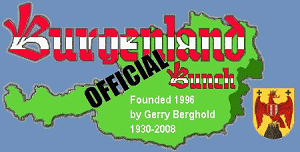 The
Facebook Bunch (from Vanessa Sandhu):
The
Facebook Bunch (from Vanessa Sandhu): 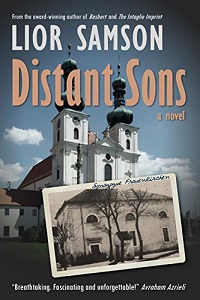 A New Novel With A
Burgenland Connection: In November I mentioned in this newsletter that BB member Larry Constantine, a
novelist under pen-name Lior Samson, was releasing his eleventh novel in early December. Titled Distant Sons,
it is a historical fiction story inspired by real people and actual events. Both print and electronic editions of the
book can be ordered at
A New Novel With A
Burgenland Connection: In November I mentioned in this newsletter that BB member Larry Constantine, a
novelist under pen-name Lior Samson, was releasing his eleventh novel in early December. Titled Distant Sons,
it is a historical fiction story inspired by real people and actual events. Both print and electronic editions of the
book can be ordered at 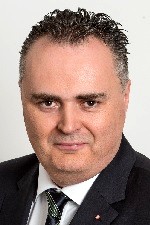
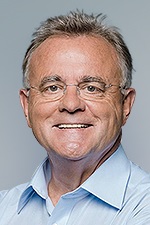 Burgenland
Government Change Coming:
Burgenland
Government Change Coming: Update
for book "The Burgenländer Emigration to America": Here is this month's update on purchases of the English issue of
the 3rd edition of Dr. Walter Dujmovits' book "Die Amerika-Wanderung Der Burgenländer."
Update
for book "The Burgenländer Emigration to America": Here is this month's update on purchases of the English issue of
the 3rd edition of Dr. Walter Dujmovits' book "Die Amerika-Wanderung Der Burgenländer." PORK
GOULASH WITH SAUERKRAUT (Sekalae)
PORK
GOULASH WITH SAUERKRAUT (Sekalae) 
